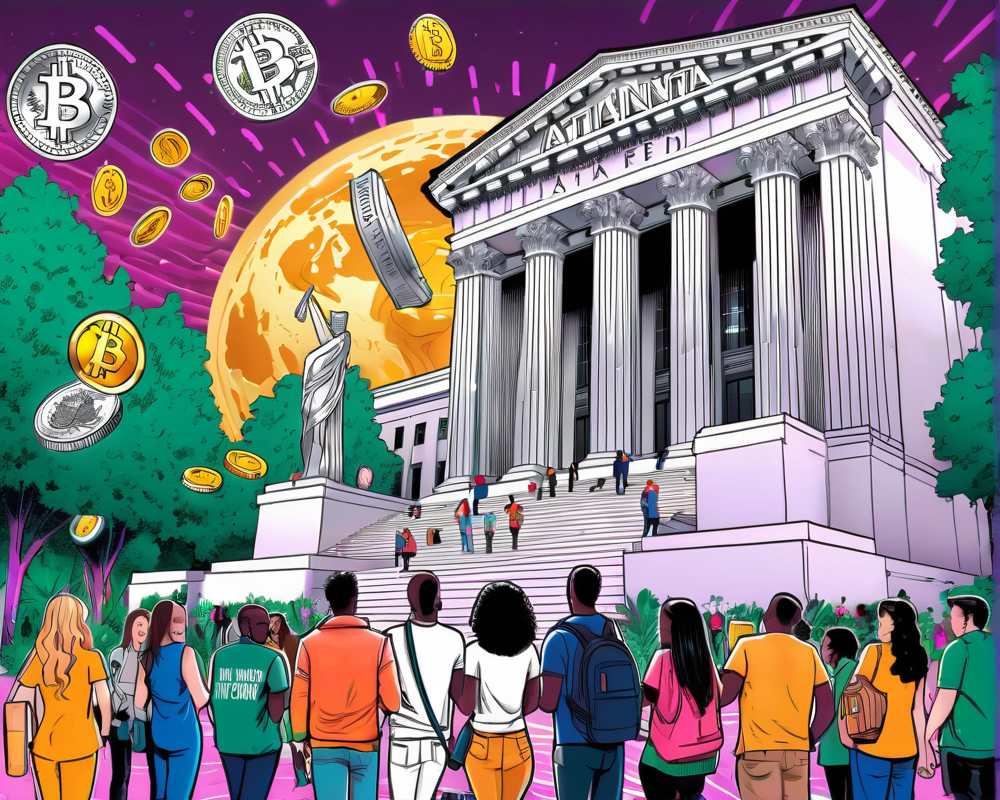A New Wave: The Atlanta Fed Explores Web3 Financial Services
The Federal Reserve Bank of Atlanta recently stirred the crypto cauldron with a fascinating 17-page paper from Christine Parlour, an esteemed professor at UC Berkeley’s Haas School of Business. This publication, part of its Policy Hub series, aims to demystify the impact of Web3 technologies on financial services, and let’s just say, the crypto community is buzzing.
Blockchains for Beginners: The Background Lowdown
Parlour kicks things off with a clear explanation of blockchains, introducing us to the magical world where “data are sorted and stored in specific locations called ‘wallets’ or ‘addresses.’” You might not need a degree in computer science to get it, but let’s not push it during a family dinner!
- Blockchains provide transparency
- Wallets are where you keep your crypto treasures
- Addresses are akin to email addresses but for your digital currency
The Decentralized Dilemma: Challenges Ahead
As we dive deeper, Parlour addresses the elephant in the room – regulatory hurdles! She discusses decentralized autonomous organizations (DAOs), which are like your friend group without any leader or structure. Good luck trying to get things done without someone in charge! “There’s no obvious legal entity,” she notes, making it tricky for regulators to keep tabs on these autonomous entities.
“The darker side of using tokens as collateral is that it generates interconnectedness among various protocols.”
In other words, one token’s trouble can quickly become everyone’s problem. Sounds like your last group project in college, doesn’t it?
Disrupting Finance: The Speedy Benefits of Web3
Unlike traditional finance, which sometimes feels like watching paint dry, Web3 is all about speed and cost efficiency, according to Parlour. She posits that trade financing could see massive improvements through slashed supply chain costs. Imagine cutting down those pesky fees that seem to multiply like rabbits every time you make a transaction!
The CBDC Curiosity: What’s Cooking at the Fed?
Of course, no crypto discussion is complete without a mention of central bank digital currencies (CBDCs). Parlour dives into the nitty-gritty of foreign exchange and the intriguing Project Mariana that seeks to apply DeFi protocols to international banking. You can almost hear the excitement in her words as she highlights Ripple’s ambitions with CBDCs, including partnerships with countries like Montenegro.
The Ripple Effect: Legal Battles and Tokenized Deposits
Interestingly, Ripple is also embroiled in a legal skirmish with the SEC over whether XRP should be classified as a security. Talk about a cloud hanging over the crypto party! Meanwhile, Parlour shines a light on tokenized bank deposits, a modern chapter in the finance saga that some argue is the middle ground between classic finance and DeFi. A brave new world indeed!
So, what did we learn from the Atlanta Fed’s latest publication? While there’s a tantalizing mix of promise and peril in the world of Web3 finance, one thing is for sure: the next few years will be a wild ride in the crypto arena!



